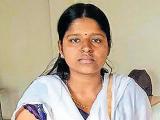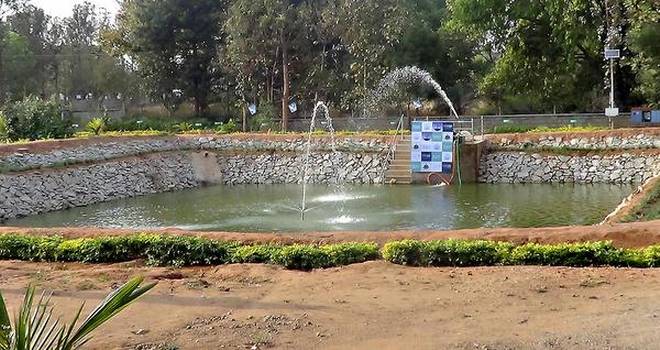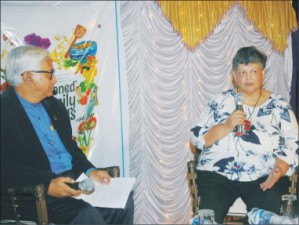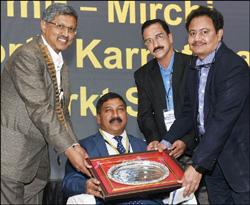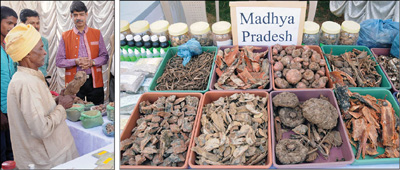General State Games: BUDAA athlete breaks 30-year-old record in men’s 800M

Vishwambhar Kolekar was undoubtedly the star performer of the day after he took down a 30-year-old State record en route to the men’s 800 metres gold here on the opening day of the athletics competitions of the State Games on Wednesday.
In the first event of the day at the RN Shetty stadium, Vishwambhar, representing Bangalore Urban District Athletic Association (BUDAA), powered to gold in 1:47.5 seconds.
The 26-year-old’s superb effort erased the long-standing State record of 1:50.4 seconds set by Damodara Gowda in the National Open Athletics Championship in Mangaluru in 1986. Gowda had won the silver then.
Such was the dominance of Vishwambhar that he eased past the finish line ten seconds ahead of the silver medallist Kumaraswamy BK (BUDAA), who clocked 1:57.5.
Vishwambhar, who had won the 800 and 1500 metres in the State Championhips in Bagalkot in October last, started as the favourite in an average field. He took the lead from the 400-metre mark and increased his pace to widen the gap. With no one to push him, Vishwambhar crossed the finish line with ease.
“I was aware of the State record but my goal was to improve upon my personal best. I am delighted to have set a new State mark. I was confident of winning the gold but to have done it with a record is something special,” Vishwambhar, who is employed in the Indian Railways, said.
In the men’s 200 metres final, Vidyasagar finished first in 21.3 seconds.
The Mysuru athlete, winner of a silver medal at the South Asian Games last year, finished just ahead of Manish (Udupi), who timed 21.4 seconds to come second while Bengaluru’s Kiran settled for bronze in 22.0 seconds.
In the corresponding women’s event, the experienced H M Jyothi of Bengaluru cruised to victory in 24.30.
In women’s long jump, Dakshina Kannada’s Sneha SS emerged winner with a jump of 5.65 metres. Dakshina Kannada’s Aishwarya RB (5.56M) pipped Praneetha Pradeep (5.55) for silver.
Kodagu triumph
Meanwhile, Kodagu clicnhed the men’s hockey gold with a comfortable 2-0 win over Rail Wheel Factory in the final.
Kunjappa opened the scoring for Kodagu in the 18th minute, while Rathan Muthanna added the second in the 27th minute.
Results: Athletics: Men: 200M: Vidyasagar (Mysuru) 21.3, 1; Manish (Udupi) 21.4, 2; Kiran M (Bengaluru) 22.0, 3.
800M: Vishwambhar K (BUDDA) 1:47, 1 (State record. Old: 1:50.4, Damodara Gowda, 1986); Kumaraswamy BK (BUDDA) 1:57, 2; Devaiah TH (BUDDA) 1:58, 3.
5000M: Immanual (Bengaluru) 15:46.08, 1; Saidappa (Belagavi) 15:50.9, 2; Chetana GJ (Mysuru) 16:62, 3.
400M hurdles: Nagabushan (DK) 53.2, 1; Akshay D (Bengaluru) 54.3, 2; Bhakshith Salian (DK) 54.9, 3.
Long jump: Siddarth Naik (Dakshina Kannada) 7.55M, 1; Anil Biju (BUDDA) 7.21M, 2; 7.17M, 3.
High jump: Nithin K (DK) 1.95M, 1; Pramod SS (Shivamogga) 1.79, 2; Karthik ER (Mandya) 1.73, 3.
Shot put: Suryaprakash M (Bengaluru) 13.00m, 1; Shantharam T (Bengaluru) 12.18M, 2; Yashas Aiyappa (Bengaluru) 12.18M, 3.
Javelin throw: Anand VH (Bengaluru) 67.52, 1; Thippanna (MEG) 58.54, 2; AVG Krishnamma Naidu (Belagavi) 57.90, 3.
Women: 200M: HM Jyothi (Bengaluru) 24.30, 1; Sneha PJ (Bengaluru) 25.0, 2; Vishwa CH (DK) 25.6, 3.
800M: Maanya KM (Bengaluru) 2:30.04, 1; Kamalaxi K (Bengaluru) 2:30.05, 2; Navyashree C (Bengaluru) 2:33.00, 3.
5000M: Thippavva Sannakki (Mysuru) 18:39.8, 1; Supritha (Hassan) 19:53.7, 2; Suma (Udupi) 20:10.2, 3.
High jump: Abhinaya Shetty (DK) 1.61M, 1; Chaitra RV (DK) 1.61M, 2; Supriya (DK) 1.55M, 3.
Javelin throw: Shahajahani (Mysuru) 44.59M, 1; Karishma Sahil (Udupi) 37.47M, 2; Kanika M (DK) 35.08, 3.
Long jump: Sneha SS (DK) 5.65M, 1; Aishwarya B (DK) 5.56M, 2; Praneeta Pradeep (Bengaluru) 5.55M, 3.
Shot put: Uma PS (Bengaluru) 13.15M, 1; Nivetha T (Bengaluru) 12.76, 2; Chinnavva S (DK) 11.77, 3.
Hockey: Final: Men: Kodagu: 2 (Kunjappa 18th, Rathan Muthanna 27th) bt RWF: 0. Third-fourth: SAI, Bengaluru: 4 (Kariappa 12th. Machaiah 18th, 29th, Rahul M 34th) bt Hubballi-Dharwad: 0.
Women: Final: DYES, Mysuru: 6 (Sandhya 7th, Rashmi 20th, 39th, Kruthika 28th, Neha 31st, Bhavya 37th) bt Bellary: 0. Third-fourth: Hassan: 6 (Sushma 9th, 34th, Chandana 21st, 44th, Devi 26th, Avinashree 27th) bt Hubballi-Dharwad:0.
Kabaddi: All finals: Men: Vijaya Bank: 22 bt BMTC: 11.
Women: Karnataka State Police: 29 bt GKC: 10.
source: http://www.deccanherald.com / Deccan Herald / Home> Sports / by Vivek MV, Dharwad / DHNS – February 09th, 2017
